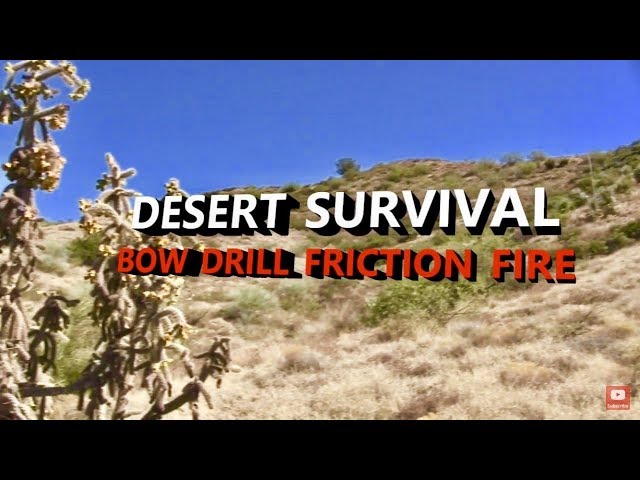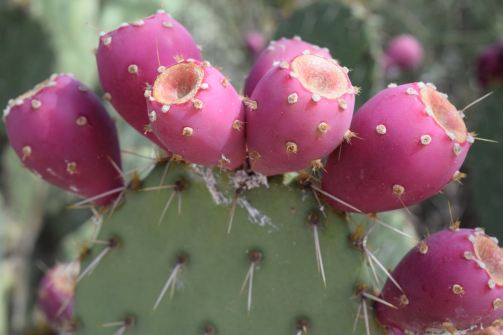Thrive in the Sands: Mastering Desert Survival Skills Across Three Unique Ecosystems

The desert. A place of stark beauty, of towering dunes and endless horizons, where the sun blazes and shadows dance. It's a landscape that both allures and threatens, a stage upon which the drama of survival plays out in its most elemental form. There's a raw thrill in testing your mettle against the desert's challenges, a profound satisfaction in understanding its secrets. But respect is paramount. The desert is unforgiving, and venturing into its embrace unprepared is a gamble with potentially fatal consequences. Always travel with experienced guides, who possess the local knowledge and skills necessary to navigate these harsh environments safely. (Find reputable tour operators on VistaLocation.com).
Today, we'll delve into the essential skills for surviving in three distinct desert ecosystems: the vast, sandy Sahara, the spiny, plant-rich Sonoran, and the stark, temperature-extreme Gobi. Each presents its unique challenges and demands a specific skillset for thriving in its arid embrace.
Section 1: The Sahara Desert, Morocco – Navigation and Water Collection
The Sahara, a sea of sand stretching across North Africa, is the largest hot desert in the world. Its iconic dunes, sculpted by relentless winds, present a formidable challenge to even the most experienced traveler. Survival here hinges on two critical skills: navigating the featureless terrain and finding or collecting life-sustaining water.
Navigation:
In the Sahara, getting lost can be deadly. The undulating dunes offer few landmarks, and sandstorms can quickly erase tracks. Relying solely on intuition is a recipe for disaster. Instead, embrace the ancient art of celestial navigation.
During the day, the sun is your primary guide. Remember that the sun rises in the east and sets in the west. By observing its arc, you can maintain a general sense of direction. For more precise navigation, construct a simple sundial using a stick and sand. Insert the stick vertically into the ground and mark the shadow's position at regular intervals. This will give you an accurate indication of the east-west axis, allowing you to orient yourself.
At night, the stars become your compass. In the Northern Hemisphere, the North Star (Polaris) remains fixed in the northern sky. Locate the Big Dipper constellation and follow the line formed by the two stars at the end of its "cup" – this line points directly to Polaris. Once you've identified the North Star, you can easily determine your cardinal directions.
Water Collection:
Water is the most precious resource in the Sahara. Finding a natural source is often a matter of luck, but there are clues to look for. Dried riverbeds (wadis) and depressions in the landscape are potential indicators of subsurface water. Digging in these areas, particularly in the early morning, may reveal damp sand.
If you have plastic sheeting, constructing a solar still is an effective way to collect water. Dig a pit, place a container in the center, and cover the pit with the plastic sheet, anchoring the edges with sand. Place a small weight in the center of the plastic, directly above the container. Condensation will form on the underside of the plastic and drip into the container.
Even without plastic, you can collect dew from vegetation. In the early morning, use a cloth to wipe the dew from leaves and then wring the moisture into a container. This method yields only small amounts of water, but every drop counts.

Remember, water conservation is crucial. Minimize perspiration by staying in the shade during the hottest part of the day and avoiding strenuous activity.
Section 2: The Sonoran Desert, Arizona/Mexico – Edible Plants and Shelter Building
The Sonoran Desert, straddling the US-Mexico border, is a vibrant ecosystem teeming with unique plant and animal life. Towering saguaro cacti dominate the landscape, providing both shade and potential resources. Survival here requires knowledge of edible plants and the ability to construct effective shelter from the intense heat.
Edible Plants:
Caution: Never consume a plant unless you are 100% certain of its identification. Many desert plants are poisonous.
One of the most recognizable and readily available food sources in the Sonoran Desert is the prickly pear cactus. The fruits, which ripen in late summer, are juicy and sweet, but covered in tiny, barbed spines called glochids. To safely harvest prickly pears, use tongs or a forked stick to detach the fruit. Burn off the glochids with a flame (a lighter or small fire) or rub them off with sand. Peel the outer skin and enjoy the pulp inside.

The agave, another iconic Sonoran Desert plant, also provides sustenance. The heart of the agave can be roasted in a pit to break down its tough fibers and make it edible. This process requires significant time and fuel, but the resulting food is a valuable source of carbohydrates.
Both prickly pear fruits and agave hearts are rich in vitamins and minerals, providing essential nutrients for survival.
Shelter Building:
The Sonoran Desert experiences scorching temperatures during the day. Finding or creating shade is critical for preventing heatstroke and conserving energy. Constructing a temporary shelter using available materials is a vital survival skill.
Fallen saguaro cactus ribs, stripped of their flesh, make excellent structural components for a shade shelter. Lean the ribs against a sturdy bush or rock formation to create a frame. Weave smaller branches and desert scrub between the ribs to create walls and a roof. The thicker the walls, the better the insulation from the sun's rays.
Ensure your shelter is well-ventilated to allow for airflow. Position the entrance away from the prevailing wind to minimize exposure to dust and sand.
Remember to minimize your impact on the environment. Use only dead or fallen materials and dismantle your shelter before leaving.
Section 3: The Gobi Desert, Mongolia – Temperature Fluctuations and Fire Starting
The Gobi Desert, a vast expanse of rock and gravel in Mongolia and China, is known for its extreme temperature fluctuations. Scorching days give way to freezing nights, making temperature management and fire starting essential survival skills.
Temperature Management:
The Gobi Desert can experience temperature swings of over 50 degrees Fahrenheit within a single day. Dressing in layers is crucial for adapting to these changes. Wear lightweight, breathable clothing during the day to minimize perspiration and protect yourself from the sun. As the temperature drops, add layers of insulation to trap body heat.
Utilize natural insulation materials if available. Animal fur found in abandoned settlements (exercise ethical considerations – avoid disturbing active habitats) can provide excellent warmth. Stuffing dry grasses or leaves into your clothing can also create an insulating layer.
Be aware of the risks of both hypothermia and heatstroke. Hypothermia can occur even in relatively mild temperatures, especially if you are wet or exhausted. Heatstroke is a serious condition caused by prolonged exposure to high temperatures and dehydration. Seek shade, drink plenty of fluids, and avoid strenuous activity during the hottest part of the day.
Fire Starting:
Fire is essential for warmth, cooking, and signaling in the Gobi Desert. Finding dry tinder can be challenging, but dry grasses and animal dung are often available.
One of the most reliable methods for starting a fire in the wilderness is the bow drill technique. This method requires practice and coordination, but it can be mastered with persistence.
- Gather your materials: You'll need a bow (a flexible stick with a cord), a spindle (a straight, dry stick), a handhold (a smooth stone or piece of wood with a depression), and a fireboard (a flat piece of wood).
- Prepare the fireboard: Cut a small notch into the edge of the fireboard. Place tinder (dry grass, shredded bark) underneath the notch.
- Position the spindle: Place the spindle into the notch on the fireboard, with the handhold on top of the spindle.
- Use the bow: Wrap the bowstring around the spindle, positioning it so that you can rotate the spindle by moving the bow back and forth.
- Apply pressure: Apply downward pressure on the handhold while moving the bow back and forth in a sawing motion.
- Create embers: Continue sawing until you create a small pile of hot dust (embers) in the notch.
- Transfer to tinder: Gently tap the fireboard to transfer the embers onto the tinder.
- Create a flame: Carefully blow on the embers until they ignite into a flame.

Remember to clear a safe area around your fire and never leave it unattended.
Conclusion
Desert survival is a challenging but rewarding endeavor. It demands respect for the environment, a deep understanding of its intricacies, and a willingness to learn and adapt. In the Sahara, navigation and water collection are paramount. In the Sonoran, knowledge of edible plants and shelter building are key. And in the Gobi, temperature management and fire starting are essential.
Mastering these skills can empower you to thrive in some of the world's most extreme environments. But remember, preparation is crucial. Learn as much as you can, practice your skills in a safe environment, and always travel with experienced guides.
Ready to embark on your own desert adventure? Explore the guided desert tours available on VistaLocation.com and experience the thrill of the desert in a safe and responsible way. Discover the untamed beauty of these landscapes and test your limits while respecting the delicate balance of these unique ecosystems.
